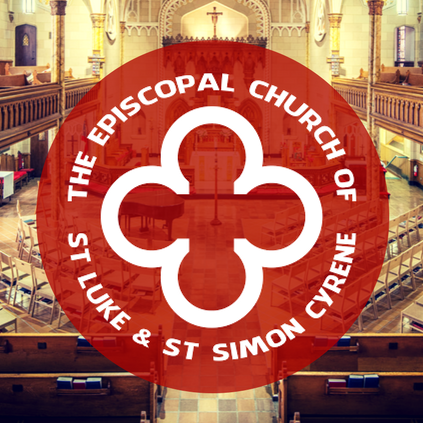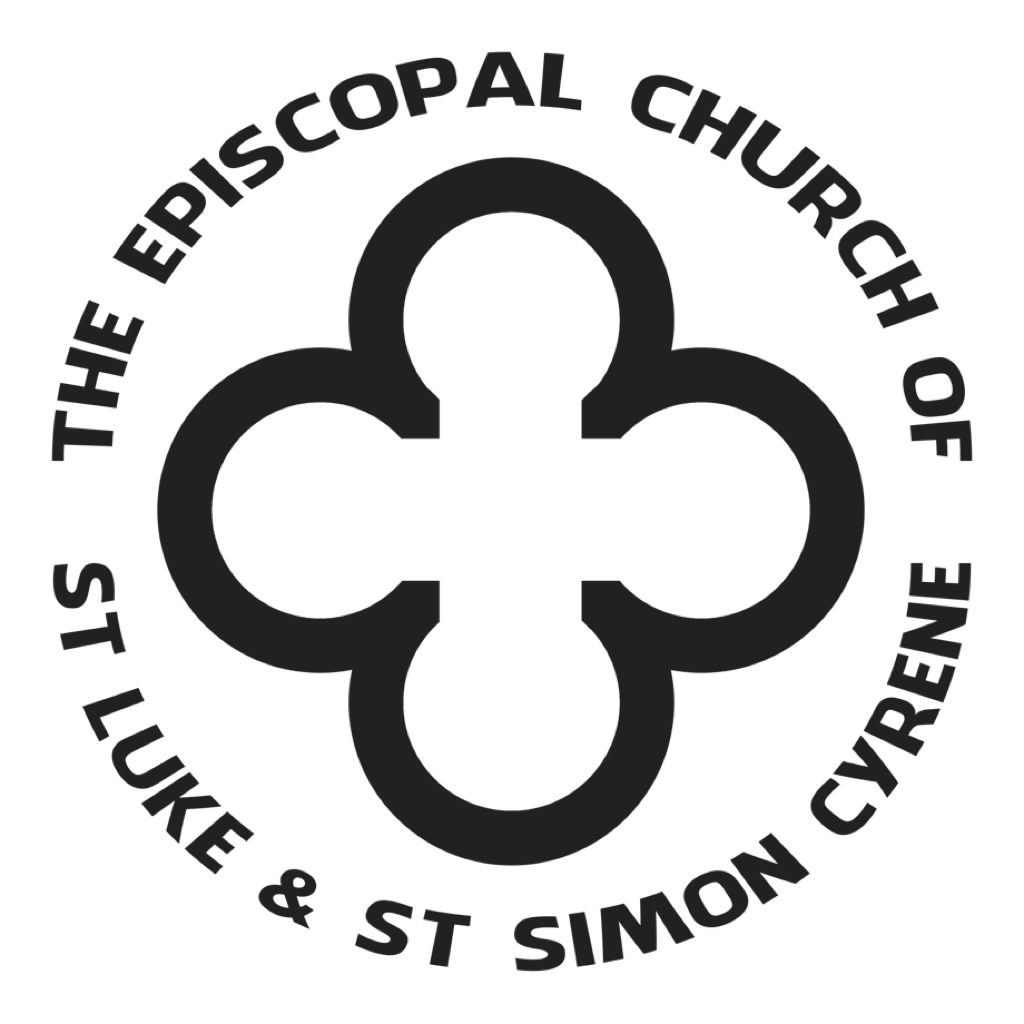
The History of Two Churches:
St. Luke's Church
The ANNALS OF ST. LUKE’S CHURCH are published in compliance with the request of St. Luke’s Vestry as contained in the following preamble and resolution adopted by that body in July 1st last:
“WHEREAS St. Luke’s Parish has now had an organized existence extending over two generations, and the facts of its history are of interest sufficient to warrant their preservation in permanent and accessible form, therefore
RESOLVED, that our Rector be requested to prepare and publish in suitable book form, an Historical Sketch of St. Luke’s Church, embodying such documentary and statistical facts as he shall deem of interest.”
Prefatory Note from Annals of St. Luke’s Church, Rochester, N. Y., 1883
St. Luke’s Church, Genesee Falls was founded in 1817, the first Episcopal Church (and the second church of any kind) in the newsettlement of Rochesterville. Among the founders, and the first Warden of the congregation, was Colonel Nathaniel Rochester. The cornerstone for the present St. Luke’s was laid in 1824. It is the oldest public building still in use in the City of Rochester. The church was dedicated on September 30, 1827 by the Right Rev. John Henry Hobart, Bishop of New York (in the days when New York was one diocese). In the 19th century, St. Luke’s gave birth in whole or part to eight Episcopal churches: St. Paul’s (1827), Trinity (1845), Christ (1855), Good Shepherd (1863), Epiphany (1866), St. Clement’s (St. Andrew’s) (1871), St. John’s (1875), and St. Stephen’s (1892). Mission work among the deaf in the diocese was begun here in 1874, and the Church Home founded with the aid of the parish in 1868.
Among the Vestrymen in the early days of the Church were some well known Rochester names: Jonathan Child (the first mayor of the city), Oliver Culver, William W. Mumford, Elisha Strong and William Pitkin.
Eleven individuals served as rector of St. Luke’s over the years: The Rev. Francis H. Cuming (1820-1829) (who was implicated in the Masonic “Morgan Affair”), the Rev. Henry J. Whitehouse (1829-1844) (Whitehouse was later Bishop of Illinois), the Rev. Thomas C. Pitkin (1844-1847), the Rev. Henry W. Lee (1848-1855) (Lee was consecrated Bishop of Iowa in 1855 at St. Luke’s), the Rev. Benjamin Watson (1855-1859), the Rev. R. Bethell Claxton (1859-1865), the Rev. Henry Anstice (1866-1897), the Rev. Rob Roy McGregor Converse (1897-1915), the Rev. Dr. Samuel Tyler (1916-1932), the Rev. Dr. Frederick M. Winnie (1933-1972 ), and the Rev. Bruce Hansen (1973-1987). From the old Two Saints website
From an early engraving. The original church is the building directly behind the first section of our present church. It was moved to the back of the property when the stone church was built.
"The wooden church of which St. Luke's had ben so proud was proving inadequate. It already had been repaired and the congregation was growing at an even faster rate than the population. With the passage of time the antipathy to anything Anglican, which had been engendered by the Revolution and th War of 1812 was lessening. Ties between the American church and the mother country were growing more tenuous.
By 1823, the vestry felt the challenge must be met and it was decided to move the wooden church to the back of the lot, where it would be used for educational purposes. Like Solomon, they planned a stone church more worthy of their faith.
From "St. Luke's Church, Genesee Falls, 1817-1967.
St. Simon Cyrene: A Short History
1921-1987
In the early fall of 1921, a small group of Black Episcopalians met at the home of Mr. and Mrs. Oliver Adams, 41 Morton Street, to discuss the establishment of a Black Episcopal Church in Rochester. Similar churches already existed in Buffalo and Syracuse (both named St. Philip’s). The first Services were held in The Church of the Epiphany on Jefferson Avenue (now a Seventh-Day Adventist Church) at the invitation of their rector, The Rev. W.W. Jennings.
Among these first Services, one had a very special guest: The Rt. Rev. Edward Thomas Demby, Bishop Suffragan for Colored Work in the Diocese of Arkansas and in the Province of the Southwest. Bishop Demby and Bishop Henry Beard Delaney of North Carolina in a similar position, were the first African-Americans ordained a bishop for a domestic diocese in the Episcopal Church, albeit their work was restricted to “colored” Episcopalians. The visit must have been a great success, because after it, thirty-five families petitioned the Bishop of Western New York, The Rt. Rev. Charles Henry Brent, to establish a mission congregation.
Assisting in this endeavor was the diocese’s priest in charge of missionary work and the extension of the church in Rochester, The Rev. Charles Roger Allison. Dr. Allison saw to it the congregation was taken care of either by himself or others until their first priest was called. He was so highly regarded that the door to the tabernacle at St. Simon’s (now in the Church of St. Luke & St. Simon Cyrene) was a memorial to him, calling him the “first pastor of St. Simon’s.”
From the old Two Saints website
The fledgling congregation spent its first years worshiping at one of several of the other Episcopal parishes in the city: Christ Church, St. Luke’s, Epiphany, Ascension, and Trinity (now closed) all played host. Services were usually held in the afternoon. In Christ Church on June 4, 1922, Pentecost Sunday, The Rt. Rev. David Ferris, Bishop Co-adjutor of Western New York (and eventually the first Bishop of Rochester) confirmed the first class of twenty-five adults.
Choir of St. Simon Cryene on the steps of St. Luke's Church
Five clergy served as vicar or rector of St. Simon’s over the years: The Rev. Frank L. Brown (1927-1945), the Rev. Marcus James (1945-1946), the Rev. Quinton E. Primo, Jr. (1947-1963) (Primo was later Bishop Suffragan of Chicago), the Rev. Canon St. Julian Simpkins (1963-1983), and the Rev. H. Gregory Smith (1985-1987).
From the old Two Saints website: Wedding of Dorothy Harris and Wendell Phillips; The Rev. Quintin Primo, c. 1957
